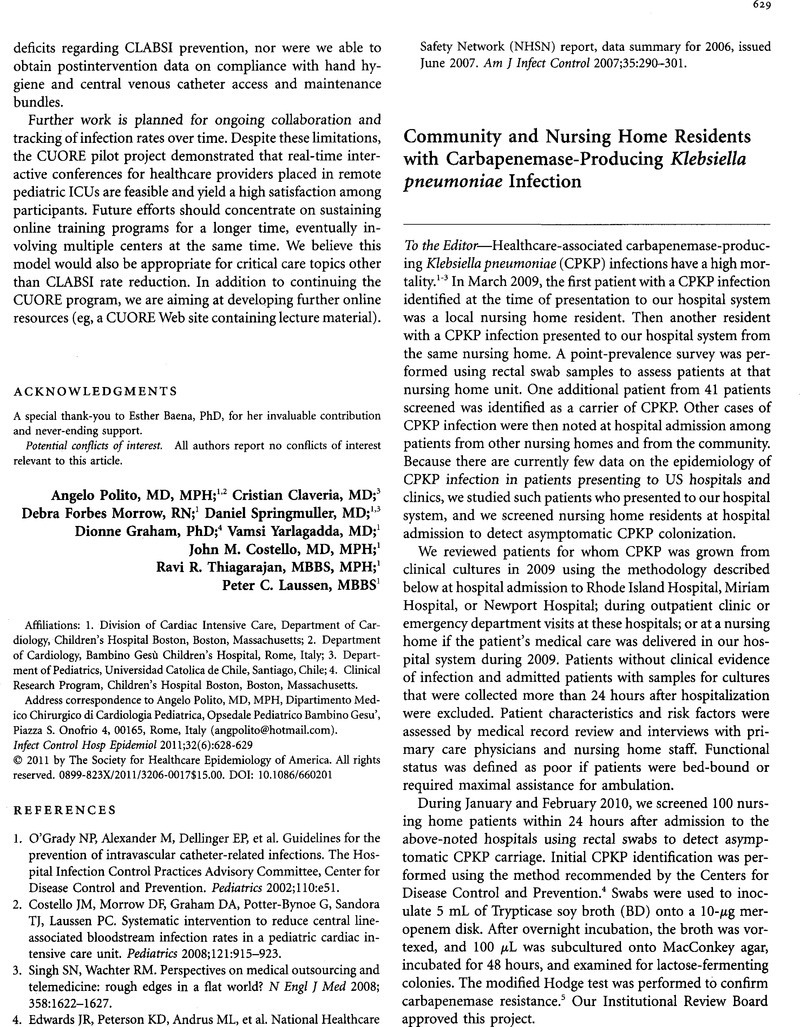Crossref Citations
This article has been cited by the following publications. This list is generated based on data provided by Crossref.
Barguigua, Abouddihaj
El otmani, Fatima
Lakbakbi el yaagoubi, Fouzia
Talmi, Mustapha
Zerouali, Khalid
and
Timinouni, Mohammed
2013.
First report of a Klebsiella pneumoniae strain coproducing NDM‐1, VIM‐1 and OXA‐48 carbapenemases isolated in Morocco.
APMIS,
Vol. 121,
Issue. 7,
p.
675.
Saegeman, V. S. M.
Ntoumpanaki, M.
Niclaes, L.
and
Schuermans, A.
2014.
Carbapenemase producingEnterobacteriaceaein Belgian nursing homes: myth or real danger?.
Acta Clinica Belgica,
Vol. 69,
Issue. 1,
p.
30.
Cunha, Cheston B.
Kassakian, Steven Z.
Chan, Ryan
Tenover, Fred C.
Ziakas, Panos
Chapin, Kimberle C.
and
Mermel, Leonard A.
2016.
Screening of nursing home residents for colonization with carbapenem-resistant Enterobacteriaceae admitted to acute care hospitals: Incidence and risk factors.
American Journal of Infection Control,
Vol. 44,
Issue. 2,
p.
126.
Kobaidze, Ketevan
Jacob, Jesse
Leong, Traci
and
Flanders, W Dana
2022.
Carbapenem-resistant Klebsiella pneumoniae: Risk Factors for Isolation Among Hospitalized Patients.
Journal of Brown Hospital Medicine,
Vol. 2,
Issue. 1,





